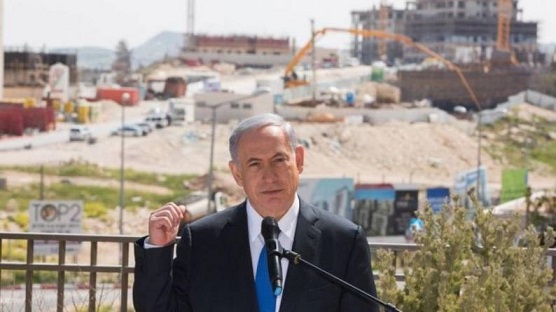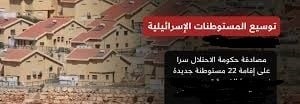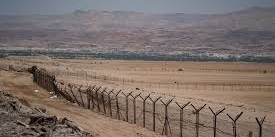By: Madeeha Al-A’raj
The National Bureau for defending land and resisting settlements ( nbprs ) stated in its latest weekly report , that It seems that any new American Administration’s stance doesn’t clearly affect nor restrains the Israeli policy with regard to the increase or decrease of settlement activities or settlement construction, and they are subject to the degree of the republican or democrat administrations’ bias to Israel. In both cases, the Palestinian people are paying the price, especially since the official US position on settlement activities has proceeded in a direction that serves the Israeli interests. Knowing that settlement was considered as a violation of the international law then became an obstacle in the way of any political settlement. The difference is clear and indicates a decline in the successive American administrations’ stances, but during the Trump’s era, it was no more a violation, nor an obstacle, but legal.
Thus, the Biden’s Administration inherited a heavy legacy, but somehow returned to a position closer to American positions that consider settlements an obstacle to the settlement. However, it didn’t send a clear message to the Israeli Government calling for it to halt settlement activities, which encouraged the occupation municipality iin Jerusalem to approve a plan to expand construction in the areas outside the Green Line, specifically the Har Homa settlement in the Jabal Abu Ghneim area between Jerusalem and Bethlehem. The area between Har Homa and Givat Hamatos. Moreover it plans to build another neighborhood that will include more than 2000 settlement units later in the Givat Hamatos area. It is worth noting that construction in these two areas will effectively isolate the village of Bin Safafa from the rest of the Palestinian areas. The human rights groups indicate that settlement expansion in Har Homa and Givat Hamatos will prevent the division of the eastern and western parts of Jerusalem in any possible future political settlement between the Palestinian and Israeli sides. In a special press conference, the Israeli PM Netanyahu announced a plan to build 3,500 settlement units east of the occupied city of Jerusalem, as part of the expansion of the settlement project in the area known as E1.
Within the context, the occupation army confiscated 13 donums of the lands of Hizma town, east of the occupied Jerusalem, to pave a new road with 1 km long and 16 meters wide. While settlers began to establish a new settlement outpost west of the Hamra settlement in the northern Jordan Valley, which was established in the 70’s of the last century and controlled more than 50,000 donums, and this comes within a clear Judaization policy that begins with placing scattered caravans inhabited by a number of settlers to seize larger areas, confiscate Palestinian lands, and gather Jordan Valley settlements in a major settlement city, especially since these lands have been controlled by the occupation for years, and their original owners are prevented from reaching them, and the land is originally belongs to the Beit Dajan village. In Bethlehem, settlers protected by the Israeli army have also re-erected 2 tents in the Taqo’ area east of Bethlehem, after being removed by the owners of the land a week ago .
Nablus, in the Dahr area adjacent to Yitzhar settlement settlers confiscated a land to expand their settlement. Moreover, the Israeli occupation authorities notified the demolition and cessation of construction in 63 facilities (tents for housing and livestock pens), and a 3200-meter agricultural road in the Ras al-Ahmar area in the northern Jordan Valley, and they also stormed Khirbet Humsa al-Tahta (Homsa Basalia) and photographed 6 tents.
On the other hand, Israel confiscated residential buildings and carried out a collective punishment demolition of houses, which are prohibited under international law. Furthermore, Israeli settlement organizations – with the help of the Israeli authorities – began forcible evictions of Palestinians from their homes in East Jerusalem. Estimations by the United Nations Office for the Coordination of Humanitarian Affairs showed that the evicted families were 200, which exposes 800 adults and children to the risk of displacement. The Civil Administration of the occupation issued demolition orders for Palestinian houses under the pretext of not having permits. For its part, the Israeli newspaper Haaretz revealed that out of 187 orders to demolish new buildings issued by the Civil Administration in the West Bank from 2019 until the end of 2020, 159 orders were issued to Palestinians and only 28 orders to settlers. Civil Administration data showed a significant increase in 2020 in the issuance of orders allowing the demolition of new buildings in Area C within 96 hours without the possibility of appeal. Most of the orders were issued to Palestinians, who still have difficulty in obtaining building permits.
List of Israeli Assaults over the Last Week Documented by the National Bureau:
Jerusalem:
- Forcing a citizen to demolish his own house in the Jabal Al Mukaber neighborhood otherwise, he has to pay a fine.
- Bulldozing the lands between the villages of Al-Zaim and Al-Issawiya east of the occupied Jerusalem, with the aim of opening a new settlement road within the so-called E1 project, which will isolate Jerusalem from its surroundings?
- Storming the Al-Issawiya town, carried out a demolition of facilities in the “Al-Za’arora” and “Habail Al-Arab” areas.
- Seizing 3 residential buildings and a plot of land in Silwan, and placing two residential rooms inside the land and a staire, besides, fixing monitoring cameras on the buildings.
Hebron:
- Surveying neighborhoods near the Al-Haram Al-Ibrahimi Mosque in the Old City of Hebron in preparation for seizing it.
- Killing a lady, Shafiqa Abu Aqeel from As-Samo’ town, south of Hebron city, and attacking another, Tahrer Al-Sharabati, 23, and her daughter, 2, in the Al-Shuhada Street.
- Preventing people from carrying out any restoration work on the neighborhoods of the Old City, including the Khan Al-Wakala.
Bethlehem:
- Attempting to bulldoze lands in the town of Battir in the Al-Khamar and Al-Qsayr areas, with the aim of establishing a settlement outpost.
Nablus:
- Cutting about one hundred olive trees planted on a seven-donum area in the Ras Al-Nakhl area, southeast of Qasra.
- Demolishing an electricity network on the road between Qusra and Jaloud villages. Attacking farmers while they were cultivating their lands in the east of Jaloud, and preventing them from work at gunpoint.
- Assaulting the mayor of Sebastia, Mohamed Azim, during his attempt to save a child from being kidnapped.
- Storming the archaeological site under strict Israeli protection in addition to closing the site and the roads leading to it.
Salfeet:
- Rejecting appeal submitted by the Jerusalem Legal Aid Centre against the decision to demolish of 9 facilities in the Qarwa Beni Hasan town, although it is part of the expansion of the structural scheme in the areas C which was taken since 2017 in the northern eastern part of the town.
- Storming the Islamic shrines in the Kefil Haris town, and performing Talmudic prayers.
Jordan valley:
- Seizing the Ein Al-Hilweh spring after establishing a park in the place that includes a pool of water, children’s toys and rest seats, to encourage settlers to visit it, besides, erecting a sign on which the Ein Al-Alam” area an alternative to Ein Al-Hilweh in preparation for seizing it under the pretext of perpetuating the memory of an Israeli settler Moshe Benjamin, one of the oldest settlers who lived there.
 المكتب الوطني للدفاع عن الارض ومقاومة الاستيطان منظمة التحرير الفلسطينية
المكتب الوطني للدفاع عن الارض ومقاومة الاستيطان منظمة التحرير الفلسطينية




